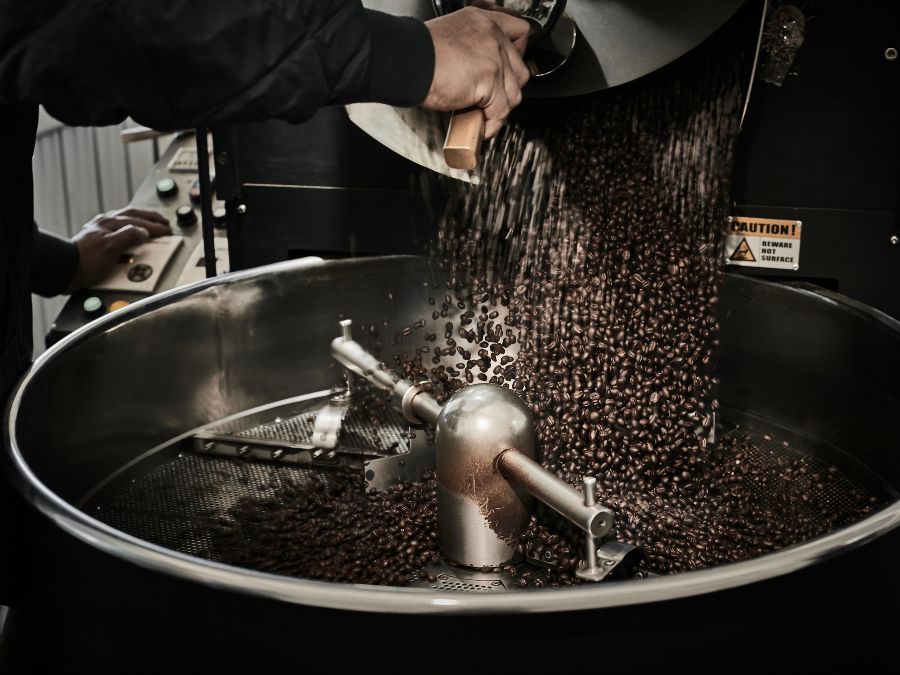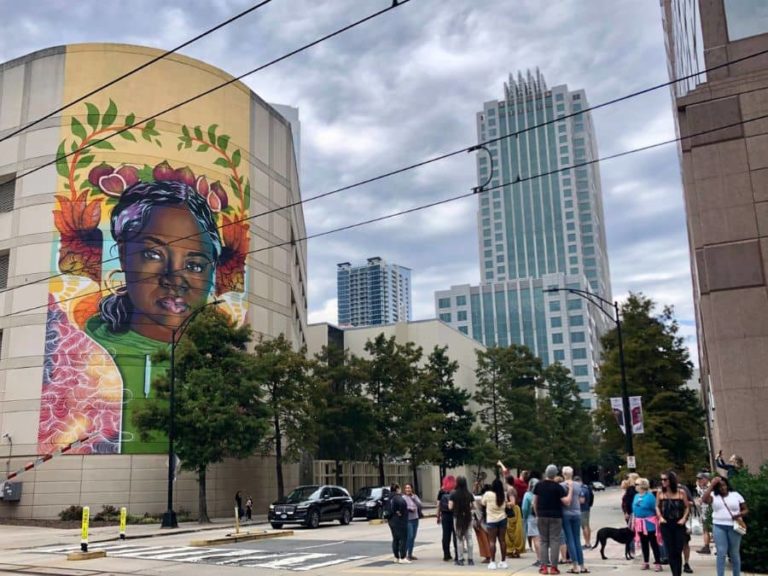Brewing Perfection: A Comprehensive Guide to Becoming a Master Barista
Introduction
The Power of Coffee Culture
Coffee culture is more than just a morning cup of Joe. It’s an experience, a social phenomenon that has infiltrated every aspect of our daily lives.
From the busy students running to grab their morning latte to the post-work meeting held at a cozy cafe, coffee shops have become integral parts of modern society. As such, being a barista has become one of the most coveted and rewarding career choices for those who love coffee and enjoy socializing with people from all walks of life.
Why becoming a barista is a great career choice
Becoming a barista offers numerous benefits that make it an excellent career choice for people looking for stability and personal growth. For starters, being in the coffee industry allows you to work flexible hours, which means you can pursue other interests or balance your work-life according to your needs. Additionally, working with different types of coffee also gives you ample opportunities for personal growth by learning about new brewing techniques and exploring new flavors.
Working as a barista also provides many opportunities for advancement within the industry; as you learn new skills and gain experience on the job, you can move up to more senior positions or eventually open up your own cafe. This means that not only is a career in coffee enjoyable – it’s also filled with potential!
The skills and qualities needed to succeed as a barista
To be successful in this line of work, there are specific qualities and skills that aspiring baristas must have. Firstly, excellent communication skills are essential because interacting with customers is an integral part of the job.
You must be able to communicate clearly, listen intently to customers’ orders and requests, offer advice when needed while ensuring their satisfaction remains top priority. Attention to detail is another critical aspect; since every drink must be prepared meticulously, you should be precise in your measurements, timing, and execution of each step to create a perfect cup of coffee.
Being able to multitask and work well under pressure also goes a long way. Becoming a barista is an excellent career choice for those who love coffee, enjoy socializing with people from all walks of life and take pride in their craft.
It offers opportunities for personal and professional growth; it’s no wonder that the coffee industry is booming! In the following sections, we’ll review how you can get started in this exciting field.

Education and Training
The importance of education and training in becoming a barista
Becoming a barista is more than just knowing how to make coffee. It’s about understanding the science behind brewing the perfect cup, mastering milk steaming techniques, and providing top-notch customer service. Education and training are essential for anyone who wants to succeed in this industry.
One of the main reasons why education and training are crucial is that they provide you with a solid foundation of knowledge on the coffee industry. You will learn about the different types of coffee beans, roasting techniques, and how to brew espresso properly.
Education also helps you understand the importance of hygiene practices in handling food products such as coffee which can affect customer satisfaction, so it is important to take hygiene practices seriously. Another reason why education is essential is that it gives employers confidence in your ability to perform well as a barista.
Employers want someone who can add value to their business through their skills, knowledge, and expertise. By having completed courses or certifications relevant for this field will give them confidence that you have what it takes.
Types of courses and certifications available for aspiring baristas
There are many different types of courses and certifications available for aspiring baristas. Some colleges offer degrees specifically designed for those interested in working as a barista while there are also numerous online resources available like Udemy or Coursera which offer affordable beginner’s courses. Certifications like Coffee Skills Program (CSP) offered by Specialty Coffee Association (SCA) help baristas develop their skills further with specialized modules that include sensory skills development, green coffee buying strategies, brewing techniques as well as advanced latte art classes etc.
Other popular courses include Barista Hustle online classes or Bootcamps offered by companies such as La Marzocco Home where aspirants can learn real-world specialized training from industry experts, which is particularly useful for those looking to break into the specialty coffee industry. Choosing the right type of education and training will depend on your personal goals, budget, and schedule.
It’s important to do your research, read reviews and testimonials from past students, and ensure that you are making an informed decision. With the right education and training, you’ll be well on your way to becoming a successful barista!

Equipment and Tools
Overview of the different types of equipment used by baristas
When working as a barista, you will need to be familiar with a variety of different coffee-making tools and equipment. The most important piece of equipment is undoubtedly the espresso machine. These machines come in all shapes and sizes, but they all work on the same basic principle: pushing pressurized water through finely-ground coffee beans to extract an intense shot of espresso.
In addition to the espresso machine, you’ll also need a good quality grinder. A grinder is used to grind coffee beans just before brewing, ensuring that the coffee is fresh and flavorful.
Baristas typically use burr grinders, which crush the beans uniformly and consistently. Other essential tools include tampers (used to pack down ground coffee into the portafilter), steam wands (used for steaming milk), pitchers (used for pouring milk), thermometers (to monitor temperature) and scales (to measure out precise amounts of coffee).
Understanding how to use espresso machines, grinders, and other tools
It’s not enough just to know what each tool does – you also need to know how to use them properly. Here are some tips on mastering each tool:
– Espresso Machine: Start by filling up the water tank with filtered water. Turn on your machine and let it heat up for at least 20 minutes before use.
Once it is heated up make sure there is no excess water/steam coming out then pull a few shots with clean portafilters before serving any customers. – Grinder: Depending on your type of grinder adjust your settings between 14-18g depending on how much yield you want from your extraction time per shot
– Steam Wand: When steaming milk aim for creating small microfoam bubbles which should be incorporated into whole milk only high fat milk content like whole milk creates good microfoam bubbles. – Scales: Use scales to weigh coffee beans and ensure that you’re using the correct amount, usually between 14-18 grams per shot.
By understanding how to properly use these tools, you’ll be able to make high-quality coffee drinks for your customers. It’s important to take the time to learn each tool and practice until you feel confident in your skills.

Coffee Beans and Roasting
Understanding the different types of coffee beans
Before you can start roasting your own coffee beans, you need to understand what types of coffee beans exist. There are two main types of coffee beans: Arabica and Robusta. Arabica is considered the superior bean due to its softer, more complex flavor profile.
It also contains less caffeine than Robusta, making it a popular choice for those who prefer a milder caffeine buzz. Robusta, on the other hand, has a harsher and more bitter taste than Arabica.
It is often used in espresso blends because it produces a thicker crema (the layer of foam on top of an espresso shot). When purchasing coffee beans, be sure to look for 100% Arabica or 100% Robusta on the bag so you know what you’re getting.
How to roast coffee beans for optimal flavor
Roasting your own coffee beans can be a fun and rewarding experience. The key is to find the right roast level for your preferences. Here’s how:
1. Choose your roasting method: You can roast your beans using an oven, stovetop popcorn popper, or a dedicated home roaster. 2. Select your green coffee beans: Green coffee beans are raw and unroasted; they’re usually sold online or at specialty stores.
3. Preheat your roaster (if using): If using a home roaster, preheat it according to the manufacturer’s instructions. 4. Add the green coffee beans: Add enough green coffee beans to fill the roaster compartment about halfway full.
5. Monitor the temperature: Keep an eye on the temperature as you roast; aim for around 400-450 degrees Fahrenheit. 6. Listen for “first crack”: After about 5-7 minutes of roasting, you’ll hear a cracking sound.
This is known as “first crack” and signals that the beans are becoming aromatic. 7. Stop roasting when desired level is achieved: Roast the beans until they reach your desired level of darkness (light/medium/dark).
Keep in mind that the longer you roast, the more bitter and smoky the flavor will be. By understanding different types of coffee beans and how to properly roast them, you can create your very own signature blend of coffee that’s tailored to your taste buds!

Milk Steaming Techniques
How to Steam Milk for Lattes, Cappuccinos, and Other Drinks
Steaming milk is an essential skill for any barista. The process involves heating milk while adding air to create a rich and frothy texture.
For latte art and other specialty drinks, steamed milk is a key component. To steam milk effectively, start by filling the steam pitcher with cold milk about 1/3 full (since the milk will expand during steaming).
Next, place the pitcher under the steam wand of the espresso machine and turn on the steam valve. Insert the wand into the milk so that it’s just below the surface and angled slightly off-center.
This will create a vortex in which air is drawn into the milk. As you steam, listen for a soft hissing sound, which indicates that air is being added to your mixture.
Submerge more of the wand to heat up more of your milk once you’ve added enough air. Once your desired temperature (around 150-155℉) has been reached, turn off valve and gently tap bottom of pitcher on counter to remove any larger bubbles from in it.
Tips for Creating Latte Art
Latte art is a fun way to impress customers while also showcasing your skills as a barista. It takes practice but anyone can learn how to make basic designs in their drinks!
Begin with creating simple designs like hearts or tulips before progressing onto more complex latte art. Once you have steamed your milk correctly using the tips above – slowly pour your steamed milk into espresso shot(s) about an inch away from the surface of espresso – allowing foam to settle on top; then move the pitcher closer to the surface when pouring the middle part or heart shape.
For the “tulip” pattern: start by pouring until foam reaches the top third of the cup then move the pitcher quickly back towards the edge and use a gentle side to side movement. With patience and practice, you’ll be able to create beautiful latte art designs in no time!

Customer Service Skills
The Importance of Customer Service in the Coffee Industry
Working as a barista requires more than just making great coffee. It’s also about providing excellent customer service. As a barista, you will interact with customers on a daily basis, and they will expect you to be polite, friendly, and knowledgeable about coffee.
In fact, customer service is one of the most important aspects of working in the coffee industry. Providing excellent customer service can lead to loyal customers who keep coming back for more.
In addition to providing great coffee, customers also come to cafes for a good experience. Customers want to feel welcome and appreciated when they visit your cafe or shop.
It’s important that you greet them with a smile and ask how their day is going. Building rapport with customers can go a long way in creating repeat business.
How to Handle Difficult Customers with Tact and Professionalism
As a barista, you may encounter difficult customers from time to time. These could be people who are unhappy with their drink or who have unrealistic expectations about what they should receive for the price they paid. The key to handling difficult customers is to remain calm and professional at all times.
Even if a customer is being rude or aggressive toward you, it’s important that you don’t respond in kind. Instead, listen carefully to their complaint and try your best to find a solution that works for both parties.
If you’re unable to resolve an issue on your own, don’t be afraid to ask for help from your manager or supervisor. They may have more experience dealing with difficult customers and can help diffuse any tension before it escalates.
Providing excellent customer service is essential in the coffee industry. By greeting every customer warmly and handling any complaints professionally, you’ll create an environment where everyone feels welcome – even those who are less than happy.

Specialty Drinks
Getting to Know Popular Specialty Drinks: Macchiatos, Cortados, and More
As a barista, it’s important to know the most popular specialty drinks in order to impress your customers and keep them coming back for more. Some of the most popular drinks include macchiatos, cortados, flat whites, and americano lattes. A macchiato is an espresso with a small amount of milk foam on top.
The milk is steamed and poured gently over the espresso shot. A cortado is similar to a macchiato but with slightly more milk.
A flat white is made with two shots of espresso and steamed milk poured in a circular motion to create a smooth texture. An americano latte is made by adding hot water to an espresso shot before adding steamed milk.
Tips for Creating Unique Drink Recipes
While it’s important to know the classics, as a barista you also have the opportunity to create unique drink recipes based on your own creativity and taste preferences. One way to create unique drinks is by experimenting with different syrups or flavors. Try adding vanilla syrup or hazelnut flavoring into your lattes or cappuccinos for something sweet yet refreshing.
Another way to get creative is by using alternative milks like almond or oat milk instead of traditional dairy options. This can add an interesting twist on classic drinks like lattes or cappuccinos.
Don’t be afraid to mix things up! Try combining different types of coffee beans for unique flavor combinations.
Or experiment with different brewing methods like pour-over or French press techniques. Becoming a successful barista means not only mastering classic specialty drinks but also experimenting with new flavors and techniques in order to keep customers excited about their daily cup of coffee.

Job Opportunities
One of the great things about becoming a barista is that there are plenty of job opportunities available, and in a variety of different settings. While coffee shops may be the most obvious place to find work as a barista, there are many other places that also hire for this role. For example, restaurants and cafes often have espresso machines and offer coffee drinks on their menus.
Additionally, hotels, resorts, and cruise ships also employ baristas to serve guests with high-quality coffee drinks. When considering what type of establishment you want to work at, think about your own preferences as well as what kind of experience you want to gain.
If you’re passionate about specialty coffee drinks and latte art, then working at an independent coffee shop may be the best fit for you. On the other hand, if you’re interested in working in a more upscale setting or gaining experience with food service as well as coffee service, then a restaurant or hotel may be a better choice.
Overall, it’s important to keep an open mind when it comes to job opportunities. Even if you have your heart set on working at one specific kind of establishment, being willing to consider other options can open up new doors and help you gain valuable experience.
Finding Job Opportunities
So where can you find job opportunities as a barista? There are several different places to look:
- Online Job Boards: many companies post job listings on popular online job boards like indeed or glassdoor.
- Coffee Industry Websites: if there’s one thing we know about the internet it’s that every industry has its own websites dedicated exclusively for its professionals so do not forget these sites too.
- Social Media: Follow coffee shops and other establishments you’re interested in working at on social media platforms like Facebook, Twitter, and Instagram. Many businesses post job openings directly on their social media channels.
- In-Person Visits: Sometimes the best way to find a job is to simply walk into a local coffee shop or restaurant and inquire about employment opportunities. While not every place has positions available, this method can be an effective way to make a personal connection with potential employers.
When searching for job opportunities, it’s important to tailor your resume and cover letter to each individual position you apply for. Highlight specific skills or experiences that make you a strong candidate for the job, such as experience with latte art or knowledge of specialty coffee drinks. Remember that finding the right job may take some time and effort, but with persistence and dedication, you’re sure to find the perfect fit!
Conclusion
Becoming a barista is a highly rewarding and fulfilling career option, offering a lot of opportunities for growth and development. This article has provided an overview of the skills and qualities required to succeed as a barista, as well as the various aspects of education, equipment, coffee beans, customer service skills, and specialty drinks that aspiring baristas need to be aware of. There are numerous educational options available for those interested in becoming a barista.
Many technical schools and colleges offer courses that teach students about coffee brewing techniques, latte art creation, milk steaming techniques and more. There are also many online courses available on coffee-related topics such as roasting beans or creating unique drink recipes.
It is important to note that becoming a successful barista requires excellent customer service skills. Great customer service begins with understanding what motivates customers to choose your establishment over others.
You must be able to cater to each individual’s needs while providing exceptional quality drinks. It is worth noting that the world of specialty coffee continues to grow rapidly every day.
As such there are many job opportunities available for skilled baristas in cafes or restaurants where people go specifically for high-quality beverages. The demand for specialty coffee is not going anywhere anytime soon!
Becoming a skilled barista requires dedication towards education and training; lots of practice using equipment and tools; familiarity with different types of beans; mastery over milk steaming techniques; great customer service qualities; creativity with creating specialty drinks; and awareness of job opportunities in your area. However one can be sure it’s all worth it when you’re able to create delicious coffee beverages which people love!







